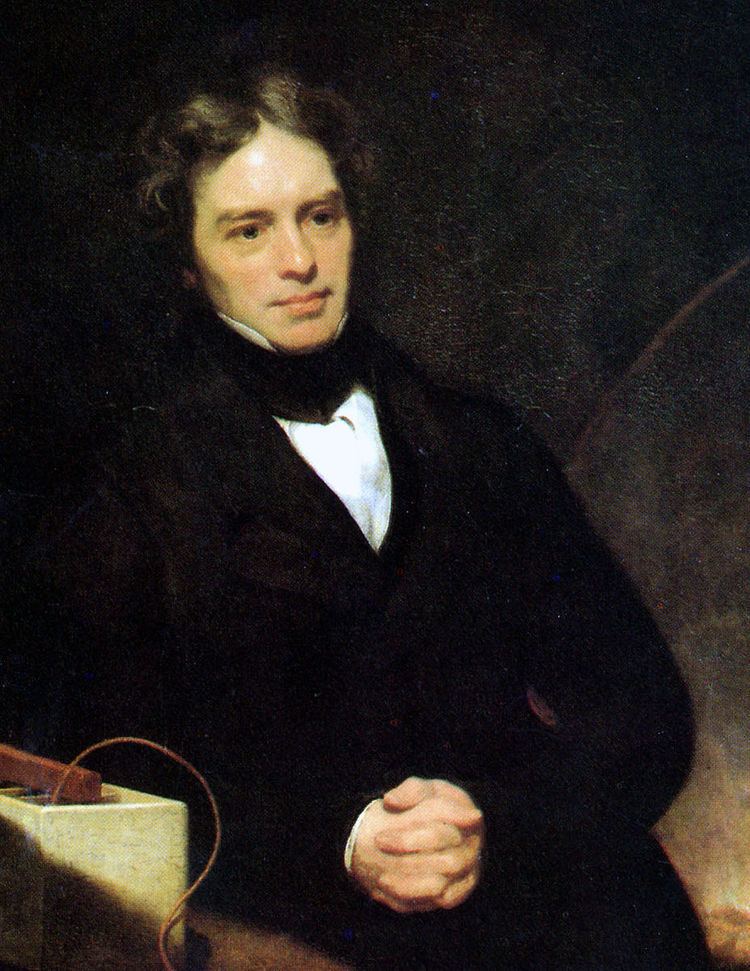 | ||
Faraday's laws of electrolysis are quantitative relationships based on the electrochemical researches published by Michael Faraday in 1834. In the same years, in Italy, Carlo Matteucci discovered the laws of electrolysis by a method totally independent of Faraday's methods. The laws of electrolysis can also be called Faraday-Matteucci's laws.
Mathematical form
Faraday's laws can be summarized by
where:
Note that M/z is the same as the equivalent weight of the substance altered.
For Faraday's first law, M, F, and z are constants, so that the larger the value of Q the larger m will be.
For Faraday's second law, Q, F, and z are constants, so that the larger the value of M/z (equivalent weight) the larger m will be.
In the simple case of constant-current electrolysis,
and then to
where:
In the more complicated case of a variable electric current, the total charge Q is the electric current I(
Here t is the total electrolysis time.
